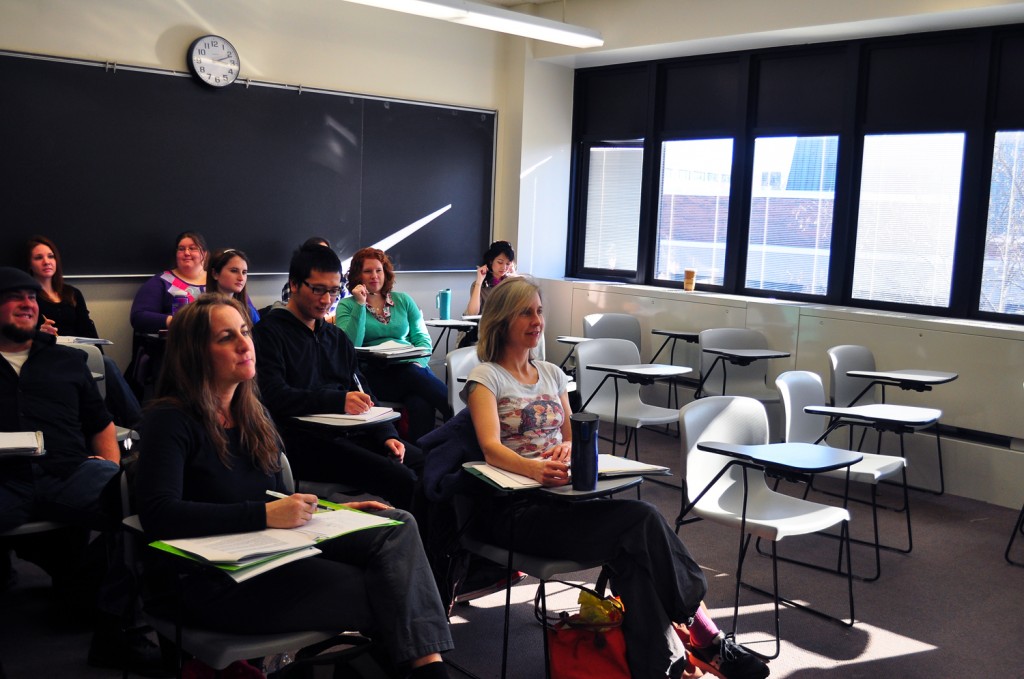

Although there was a 4.4 percent increase over the last year in undergraduate-level enrollment, graduate-level enrollment has decreased 7.5 percent this semester, according to Interim President Donald Christian’s February Faculty Report.
The SUNY New Paltz graduate program currently serves 1,200 students. While full-time graduate enrollment has increased 5 percent in the last year, Vice President of Enrollment Management L. David Eaton said the decrease is in part-time graduate enrollment.
“The biggest drop in numbers of part-time students is in the education programs,” Eaton said. “This is more pronounced because the education graduate programs represent by far the largest number of graduate students at New Paltz.”
Though admission to some academic strands of the Masters of Science and Education (MSEd) and the Masters in Arts (MAT) in adolescence education were suspended in fall 2011 for revision, it did not contribute to the enrollment drop, said Interim Dean of the Graduate School Mary Stella Deen.
Deen said graduate enrollment is down at many colleges and universities due to economic reasons. She also said that the fact that SUNY New Paltz does not offer graduate student housing may have an impact.
“This means that we draw principally from a regional population of prospective students. We can’t effectively begin to recruit in new geographic areas without that housing,” said Deen.
According to Eaton, other plausible explanations for the declining enrollments include “competition from on-line graduate programs, declining demand caused by the economic downturn and constriction of the workforce, particularly, but not exclusively, in jobs in education and competition from our competitors in the region.”
Faculty program coordinators in the Graduate School are working with deans, the provost and vice presidents to discuss the decline and develop strategies to address it, Eaton said.
Eaton said the causes of the 7.5 decrease in graduate enrollment need to be further researched.
“First, the hypothesis…need[s] to be tested through research and we are initiating research projects to find out what is happening in the graduate school market, how our programs compare to those of our competitors and analyzing where students who are accepted but do not enroll are going and why,” said Eaton.
According to Deen, members of the college administration are doing a lot to combat the low enrollment numbers.
Deen said they are encouraging the development of more summer graduate offerings, more evening offerings, supporting the development of new programs such as combined five-year bachelor’s/master’s programs and graduate certificate programs, publicizing and advertising programs and investing in scholarships for some programs.
Marketing surveys and focus groups will be formed as a way to understand the recent decrease. Although the strategy is still being designed, Christian said research and discussion will be done with graduate students, potential students and former students.
“Our goal would be to find out where the greatest needs are, how prospective graduate students see our programs relative to competing programs or other alternatives and how we can best design and deliver programs to meet student needs and interests,” said Christian.
The university recently hosted an open house for the Graduate School on Thursday, Feb. 17.
